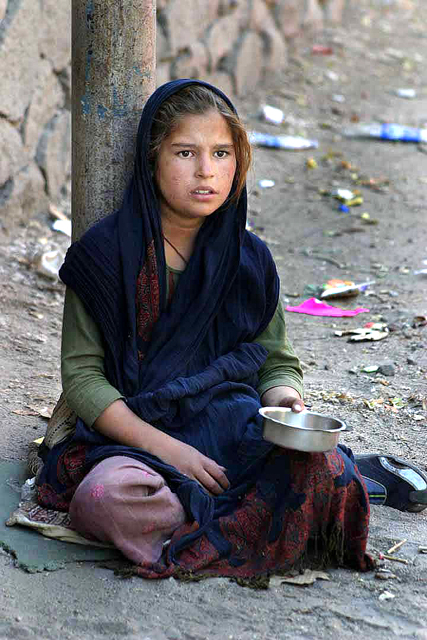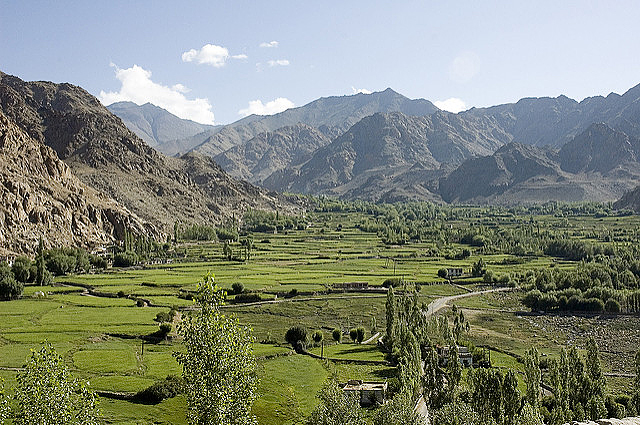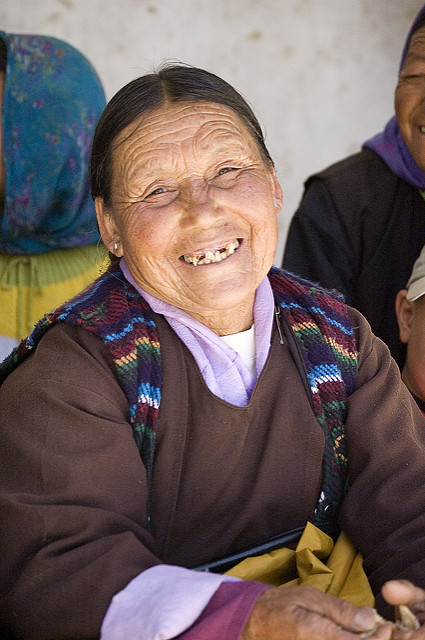The Ama Tsogspa, the Ladakhi term for groups of local women, have been tackling such community problems as the ever-increasing trash in some towns and helping to solve them. A news story in the Indian publication Business Standard last week translated “Ama Tsogspa” as “Mothers’ Alliances.”

The report on the Ama Tsogspa opened with the observation that Leh is getting covered with more and more trash and garbage. The problem is caused by the increasing number of tourists and the change to pre-packaged foods, with all the litter that results. A use it and throw it away mentality has developed, particularly in Leh, and the large town has been unable to cope effectively. The municipal garbage dump is not working very well, the journalist wrote.
However, the visitor to Ladakh will notice an immediate difference not very far away in the much smaller community of Phyang, where there is no evidence of trash anywhere. Ladakh’s famous mountains, meadows, and streams are pristine—they are completely free of trash. A local contractor, Tsering Phuntsog, said with some pride, “Although packaged foods have increased dramatically over the last 8-10 years, our village looks even cleaner than before!” He and others in Phyang credited the Ama Tsogspa for the cleanliness.

Tsering Dolam, a 47-year old housewife in Phyang, explained that the women collect the trash twice a year and burn it, but she admitted that she was unaware of the need to separate trash that could be burned from that which should not be. She did not realize that burning some plastics releases harmful gasses that pollute the air with carcinogenic and neurotoxic fumes.
The women’s groups started forming in the early 1990s in Leh and their numbers have been growing ever since. The Kargil district of Ladakh has several Ama Tsogspa groups while the Leh District has 22 villages with them. About 5,000 Ladakhi women are members of them now.

The missions of the Ama Tsogspa groups include promoting women’s empowerment, improving the management of farms, helping tourism to be more responsible, and anything else that catches their attention. In the late 1990s, for example, they focused on the use and abuse of polyethylene bags; as a result, their use was banned in Ladakh in 1998. Ladakhi women in the Mothers’ Alliances foster skills such as spinning, dyeing, weaving, and knitting; they also promote the use of traditional medicines. Their members engage in farming, dairy, and food-production work. They take stands against such traditional social ills as alcoholism.
But they increasingly realize that they need additional training to bolster their effectiveness in handling village issues. Tashi Dolker, a 43-year old woman and an active member of her local Ama Tsogspa, said that the women need more awareness in order to be more effective. She advocated better information from government agencies. She suggested that the members needed to have a broader understanding of issues throughout the Himalayan region, perhaps through exposure trips.

The news report quoted Sonam Ladol, the President of the group in Phyang, who expressed an optimistic outlook. Their members, she said, “have a lot of energy and interest but we need facilities to draw the best out of them. For this, we need support.” Then she concluded, “Actually our real potential is yet to be realized.”
A news story published in this website in 2012 about the Ama Tsogspa movement, based on a different visitor’s experiences in Ladakh, presented a similarly upbeat report about the increasing importance of the work that Ladakhi women are doing to protect and improve life in their communities.